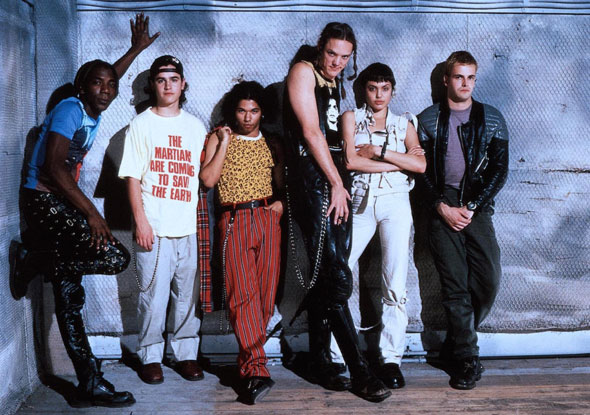The ‘90’s Time Capsule

Benjamin Himes
Imagine a film, which combined the aesthetics and intricacies of plot from Tron and The Matrix, then covered it in a paint that consisted of ‘90’s culture, and you have assembled the 1995 film Hackers. Oh lord is this film hokey, filled to the brim with techno-babble, skateboards, roller blades, clothing that screams ‘90’s, and sardonic, slacker, and silly attitude. This is a film, when regarding all the sins that are encapsulated within its runtime, add that extra spice where counting sins is not a bad thing; instead, it enhances those endearing tropes and tidbits that created such a fascinating and kitschy world in which anyone who remembers the ‘90’s when they were at a ripe age would go; “Oh yeah, that WAS a thing.”
The idiosyncratic world of Hackers, as well as the pure ‘90’s aesthetic of this film takes the audience to a world that existed not that long ago. Where people of a certain age group reminisce of a time when obscure band shirts, jolt cola, and technology of the time collide, bringing forth a wave of nostalgia that oh-so few things can recreate. If anyone were to have questions regarding the ‘90’s, simply showing them this film would be enough, I cannot stress that any further. While the techno-jargon could be summed up as flashy, Hollywood-isms to make everything the hackers say sound cool to us technologically-impaired movie-goers, the director Iain Softley and writer Rafael Moreau knew precisely what they were doing when making this film; it was not to make an exact replica of the world of hackers, but rather to create a narrative, to make all the sum of the whole look fantastic and bring the audience into a world and ideas that would be further explored in The Matrix.
Let us move on to the cast, a who’s who of actors which consists of Johnny Lee Miller of Trainspotting fame, Angelina Jolie (who needs no introduction), Matthew Lillard who in every sense of the word IS Shaggy if he were a ‘hacker’, Laurence Mason that silly scoundrel who played ‘Tin-Tin’ in The Crow, Wendell Pierce the ‘Bunk’ himself from The Wire, and, oh, let us put him on the list, Marc Anthony as a flunky agent who I almost mistook as John Leguizamo; actually, he would have been gosh darn fantastic! These loveable cast of characters, while a bit stock in their roles at times, do a sublime job of keeping up the ‘wow’ factor and entertain even the most downtrodden curmudgeons.
The film tackles themes of isolation, a sense of community within a core group of outcasts and weirdos, a look into how the world runs around them, and where they fit in regarding their place and how society imprints them within certain social stigmas that, again are reminiscent of films such as The Matrix, Fight Club and Clerks. The theme of postmodernism, changing times in lieu of the new millennium create a narrative of paranoia, a near fascist interest group hell-bent on eradicating this off-shoot of technological communism in the sphere of a capitalistic society that would love to write these kids off as nothing more than slackers and criminals.
Looking for corny flick? A time capsule which, may not hold up as well when regarding themes and motifs in other ‘90’s films that have in a sense been done with greater urgency and critical acclaim, are not a fun as this piece of eye-candy, may elicit feelings of extreme nostalgia and a joy that comes with knowing that while this film may not be a masterpiece, is a sure-fire good time and one that is WORTH that one hour and forty seven minute run time that this film can accommodate.
P.S. You know it is a ‘90’s PG-13 film when the one obligatory f-bomb is dropped at what should be the most dramatic and urgent of time.
Sources:
“Hackers”. IMDb. Amazon. 2/23/16
Hackers. Dir. Iain Softley. Perf. Johnny Lee Miller, Angelina Jolie, Fisher Stevens, Lorraine Bracco, Matthew Lillard, Jesse Bradford. United Artists. 1995. Netflix.